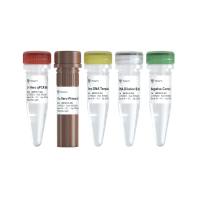Light-Activated Ion Pumps and Channels for Temporally Precise Optical Control of Activity in Genetically Targeted Neurons
互联网
575
The ability to turn on and off specific cell types and neural pathways in the brain, in a temporally precise fashion, has
begun to enable the ability to test the sufficiency and necessity of particular neural activity patterns, and particular neural
circuits, in the generation of normal and abnormal neural computations and behaviors by the brain. Over the last 5 years,
a number of naturally occurring light-activated ion pumps and light-activated ion channels have been shown, upon genetic expression
in specific neuron classes, to enable the voltage (and internal ionic composition) of those neurons to be controlled by light
in a temporally precise fashion, without the need for chemical cofactors. In this chapter, we review three major classes of
such genetically encoded “optogenetic” microbial opsins—light-gated ion channels such as channelrhodopsins, light-driven chloride
pumps such as halorhodopsins, and light-driven proton pumps such as archaerhodopsins—that are in widespread use for mediating
optical activation and silencing of neurons in species from Caenorhabditis elegans
to nonhuman primates. We discuss the properties of these molecules—including their membrane expression, conductances, photocycle
properties, ion selectivity, and action spectra—as well as genetic strategies for delivering these genes to neurons in different
species, and hardware for performing light delivery in a diversity of settings. In the future, these molecules not only will
continue to enable cutting-edge science but may also support a new generation of optical prosthetics for treating brain disorders.









